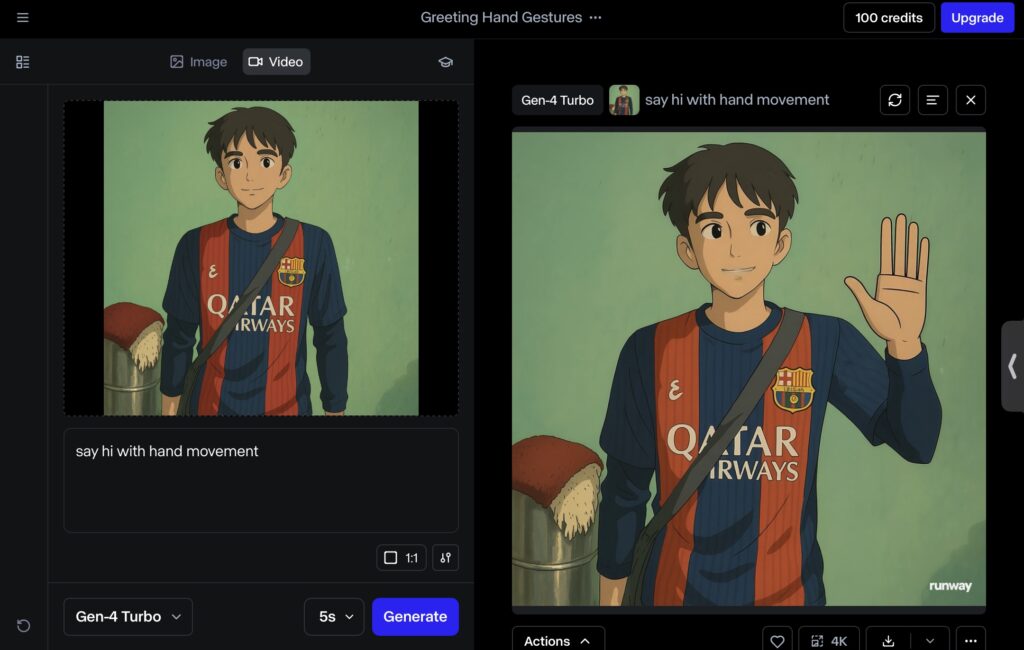In the fast-evolving world of content creation, turning static images into dynamic videos has never been easier, thanks to advanced AI tools. Whether you’re a content creator, digital marketer, or business owner, image-to-video AI tools help transform simple visuals into captivating video content. In this article, we’ll explore the Best Image to Video Generator AI Website their features, and why they stand out in a competitive market.
1. Runway ML – Best for Creative Professionals
Runway ML is a leading AI platform known for its user-friendly interface and high-quality video generation. With tools like image animation, text-to-video, and video editing, it’s perfect for designers and content creators looking for flexibility and creative control. Runway ML give 125 credits for video generation.
Key Features:
-
Turn a single image into animated scenes
-
AI-powered motion effects and transitions
-
Cloud-based video editor
-
Integrates with major creative platforms.
Best For: Designers, video editors, and social media content creators.

2. Pika Labs – Best for Realistic AI-Generated Videos
Pika Labs has gained popularity for its ability to create highly realistic videos from images using prompt-based generation. It leverages advanced AI to animate characters, objects, and environments with natural movements.
Key Features:
-
Text and image prompts supported
-
Cinematic video styles and camera movements
-
Regular model updates for better realism
-
Simple interface for fast generation
Best For: AI enthusiasts, filmmakers, and storytellers looking for lifelike animations.
3. Kaiber AI – Best for Music Videos and Art Animation
Kaiber AI offers a unique twist on image-to-video creation by focusing on artistic transformation. It allows users to animate images to match music, making it a favorite among musicians and digital artists.
Key Features:
-
Sync visuals with music beats
-
Custom art styles and transitions
-
Video generation from both stills and sketches
-
Mobile-friendly platform
Best For: Musicians, artists, and influencers who want to create stylized content.
4. Animoto – Best for Marketing and Social Media Videos
While not purely AI-based, Animoto combines automation with creative templates to help you turn images into professional videos quickly. It’s ideal for small businesses and social media marketers looking for fast, polished results.
Key Features:
-
Drag-and-drop builder
-
Library of templates, music, and text overlays
-
Automated video formatting for different platforms
-
Great for product showcases and testimonials
Best For: Marketers, small businesses, and non-designers.
5. DeepBrain AI – Best for AI Avatar and Presentation Videos
DeepBrain AI is perfect for creating video presentations using AI avatars that speak and interact using a script. You can input images, create backgrounds, and even select a presenter to animate your content.
Key Features:
-
AI avatars with lifelike voice and lip-sync
-
Multilingual support
-
Upload custom images and backgrounds
-
Ideal for training, corporate videos, and news
Best For: Educators, business professionals, and trainers.
6. Hailuoi AI – Best for Image to Video Generation , Use prompts for better result.
Why Use Image-to-Video AI Tools?
Using AI to create videos from images saves time, increases engagement, and enhances storytelling. Videos get more traction than still images on platforms like Instagram, TikTok, and YouTube. These tools make it possible to produce high-quality visuals even if you don’t have prior video editing experience.
Benefits:
-
Boost engagement rates on social platforms
-
Improve dwell time and reduce bounce rates on websites
-
Increase conversions with visual storytelling
-
Easily repurpose existing image assets
Final Thoughts
The best image-to-video AI tools in 2025 are powerful, accessible, and designed for various creative needs. Whether you’re animating a product photo, creating a music visualizer, or crafting a digital ad, there’s an AI tool to help you bring your vision to life.
Start with platforms like Runway ML or Kaiber AI to explore your style, and don’t be afraid to experiment. As AI continues to evolve, so does the potential to transform static images into engaging, share-worthy content.